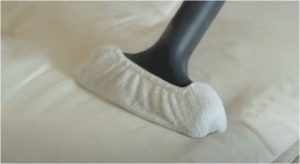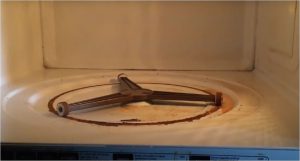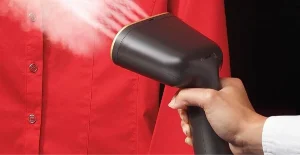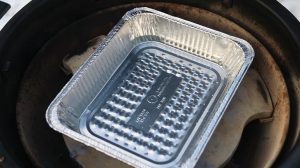Steam Vs. Evaporative Whole-House Humidifier
Note: This article may contain affiliate links, which means if you make a purchase following our links won’t cost you extra, but we may earn a commission. Learn more
Steam humidifiers and evaporative whole-house humidifiers serve the same purpose but operate differently. The primary distinction lies in their mechanisms and efficiency levels.
Steam humidifiers work by boiling water to produce steam, which is then injected into the air stream. This method allows them to create moisture rapidly, making them highly efficient. Their design enables them to handle a larger capacity compared to their evaporative counterparts.
Moreover, they are known for their accuracy in maintaining desired humidity levels. Despite the boiling process, steam humidifiers are energy-efficient, requiring a consistent amount of energy to produce water vapor for the air.
- Recommended: AprilAire 800 Whole-House Steam Humidifier

And, evaporative humidifiers rely on the natural process of evaporation to add moisture to the air. While they are effective, they might not be as quick or as efficient as steam humidifiers. When choosing between the two, it’s essential to consider factors like the size of the area, desired humidity levels, and energy consumption. Both types have their merits, but steam humidifiers often stand out for their speed, capacity, and energy efficiency.
- Recommended: YougetTech Evaporative Humidifiers

Steam Humidifiers: The Inner Mechanics
Steam whole-house humidifiers are marvels of modern engineering. They operate by boiling water, which then transforms into steam.
This steam is subsequently released into the air, increasing the humidity levels of the environment. The primary advantage of this method is its ability to produce moisture rapidly.
By directly injecting steam into the air, these humidifiers can achieve desired humidity levels with precision and efficiency. Their design is particularly beneficial for larger spaces or areas with exceptionally dry conditions.
You Might Also Like: Best Cast Iron Wood Stove Steamer- Top 6 Choices
Evaporative Humidifiers: The Natural Process
Evaporative whole-house humidifiers utilize a more organic approach to increase humidity. They contain a wick filter that absorbs water. A fan then blows air through this moistened filter.
As the air passes through, it naturally evaporates some of the water, releasing moisture into the room. This method mimics the earth’s natural evaporation process, making it an eco-friendly option.
While it might not be as quick as steam humidifiers, it’s effective and offers a gentle increase in room humidity.
Steam vs Evaporative: A Humidifier Showdown
In the battle between steam and evaporative humidifiers, each has its strengths. Steam humidifiers are known for their speed and efficiency. They’re ideal for quick humidity adjustments and larger spaces.
On the other hand, evaporative humidifiers shine in energy conservation, using a natural process to add moisture to the air. The choice between the two often boils down to individual needs, room size, and personal preferences.
Steam Humidifier Care: Best Practices
- Regular Inspection: Periodically check the components for any signs of wear or damage.
- Water Quality: Using distilled or demineralized water can prevent mineral buildup.
- Filter Replacement: Change filters as recommended to ensure optimal performance.
- Check for Leaks: Ensure no water is leaking from the unit or its connections.
Evaporative Humidifier Cleaning Steps
- Begin by unplugging the unit and emptying any remaining water.
- Remove and clean the water tank with a mixture of water and white vinegar.
- Clean the wick filter. If it’s too dirty or worn out, consider replacing it.
- Wipe down the exterior with a damp cloth.
- Allow all parts to dry completely before reassembling and using the humidifier.
Steam Humidifiers and Energy Efficiency
Steam humidifiers have garnered attention for their ability to quickly and effectively increase humidity levels. But how do they fare in terms of energy efficiency? Steam humidifiers operate by boiling water, a process that inherently consumes energy.
Yet, their design and mechanism allow for precise humidity control, reducing unnecessary operation. This precision ensures that the humidifier only operates when needed, leading to potential energy savings in the long run.
Moreover, modern steam humidifiers come with advanced features that optimize energy consumption, making them a viable choice for those concerned about energy bills.
Health Implications of Evaporative Humidifiers
Evaporative humidifiers, known for their natural method of increasing humidity, have raised questions about their health implications. These humidifiers use a wick filter to absorb water, and a fan then disperses the moisture into the air.
Since they rely on evaporation, they don’t release water impurities into the air. This means fewer minerals and contaminants are introduced into the indoor environment. The absence of boiling also means no risk of scalding or burns.
Regular maintenance and cleaning of the wick filter are essential to prevent mold growth, ensuring the humidifier remains a safe choice for home use.
Installing Steam Humidifiers: A Simple Guide
- Choose a suitable location near a water source and electrical outlet.
- Connect the humidifier to the home’s water supply using the provided kit.
- Attach the steam wand or nozzle to the unit and ensure it’s directed towards the air stream.
- Plug the humidifier into the electrical outlet and set up any digital controls or thermostats.
- Test the unit to ensure it’s operating correctly and adjust settings as needed.
Steam vs Evaporative Humidifiers: Weighing the Pros and Cons
Pros:
- Steam humidifiers offer rapid humidity adjustment.
- Evaporative humidifiers provide natural humidity increase without added impurities.
- Steam units allow for precise control, optimizing energy use.
- Evaporative models are generally quieter during operation.
Cons:
- Steam humidifiers can have higher initial costs.
- Evaporative models might require frequent filter replacements.
- Steam units can get hot, posing a minor burn risk.
- Evaporative humidifiers may struggle in extremely dry conditions.
Learn More: Using Whole House Humidifiers: Pros and Cons





